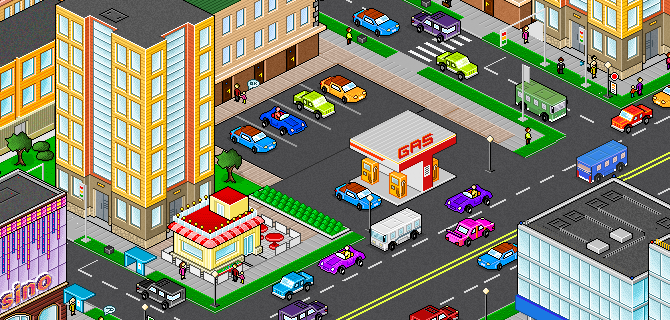-
Few people have ever seen the Instagram logo outside the virtual realm. It exists as a digital touch point on a smartphone; an enjoyable, familiar place to visit for millions of people.
But the collective freakout the internet experienced in the wake of the recent Instagram logo change demonstrated just how significant is the emotional ‘ownership’ people place on the virtual things they use.
" The challenge is to not let complexity stall growth."
Guy Thompson, Contributing editor, BlueNotesInstagram resolutely stuck with the change and everyone calmed down about a week later. But the lesson for business was clear: customers have touch points and habits they hold on to which offer confidence and comfort – even in a digital world.
As a digital system grows in complexity, users will latch onto features like they are tangible things. It becomes ‘theirs’.
Facebook learned this lesson and now rolls out changes to its user interface gradually. In fact, New Zealand is the lead country to experience UX and UI changes to Facebook before the rest of the world. The reasoning is NZ is a digitally first-world country with a swift and vocal response to digital changes but only a small population of digital citizens to upset. So the risk of a full-scale revolt is small.
VIRTUAL CITY
Building enterprise digital technology is fraught as these examples show. In many ways it is like constructing a virtual city – complete with idealists, protestors and vested interests. In every industry from financial services, retail, education and medicine, there is a mountain of data being built around the digital city workers inhabit.
This digital city can be reconfigured quickly and entire sections can be switched off or upgraded with the bulldozer of digital disruption.
This is where simplification can cause problems. When streamlining and reducing the complexity of a digital landscape a company can quickly upset its digital citizens. No one likes to see their neighbourhood turned into a construction zone.
{CF_IMAGE}
Changing or knocking down one of these digital spacescan trigger a lot of resistance, raising the same issues which humans face on a daily basis - uncertainty and unfamiliar territory. Corporations can risk making their virtual citizens ‘digitally homeless’ if the new, simplified space doesn’t make sense to them.
This is an important part of UX - user experience. It’s not what the buttons and scroll bars look like on screen, it’s the journey a real person takes through a digital space. Has the space been constructed logically or did the virtual bus stop end up in the virtual garbage dump during the rush to complete the project?
{CF_IMAGE}
The challenge for corporations is to not let complexity get in the way of further growth. The rapid financial growth of a company creates complexity and this complexity stalls growth. This is known as the growth paradox.
New start-ups don't have thousands of employees and parental boards agonising over their high-speed lifestyle. Corporations must learn how to be innovative and move swiftly to implement new ideas, delivering them to customers quickly, when they may already have millions of users, customers and digital citizens to look after.
SIX TIPS FOR MANAGING CHANGE IN A DIGITAL LANDSCAPE
• Create memorable goals and objectives. This makes the vision and changes easier for citizens to explain to each other and allows the city planners and engineers to stay on track.
• Communicate the future changes early. Articulate “what’s in it for them” to ensure your digital citizens are engaged in the process. The key points should be easy to remember and share.
• Keep communication simple. Avoid the urge to include every single detail of the complex project in messages. Citizens will tune-out and miss the important point you were trying to make.
• Collect data to support decisions. Polls and surveys before and during a transformation process will help you understand what your digital citizens are thinking. Collecting page views and user numbers will also help you understand the traffic movements of digital citizens.
• Make the changes visual. Sharing screen shots of new features and diagrams of how a workflow has been improved is more effective than trying to absorb a final, (lengthy) instruction manual.
• Get regular feedback from your digital citizens. When users are unhappy with changes, sometimes they just want to be heard and get the frustration out of their system. The old feature they enjoyed might have been moved around the corner and they just haven't found it yet. (Remember that lengthy instruction manual you expected them to read…)
It’s comfortable to be complex if that complexity is familiar. You can sort everything out later if you have an infinite digital hallway to temporarily leave things for later disposal. But it will get harder and harder to move around with all that nostalgic digital stuff lying around.
This is a challenge for our own personal data and for the mountain of data our digital cities are built on. There’s nothing like a digital spring clean to get things back on track.
Guy Thompson is a contributing editor at BlueNotes
The views and opinions expressed in this communication are those of the author and may not necessarily state or reflect those of ANZ.
-
-
EDITOR'S PICKS
-
“Compliance is good for business,” former ANZ chief executive Mike Smith told me when I took the role of chief compliance officer at the bank back in 2013.
8 June 2016 -
The Australian government’s newly rolled out innovation and science agenda represents positive political leadership in creating an Australia which values new ideas, business and technology. But it’s wrong to assume innovation is limited to, or synonymous with, fancy new tech.
6 April 2016 -
Century old industries are being turned on their head as disruptive organisations find new and innovative ways to operate and succeed in our new digital-driven world.
4 July 2016


